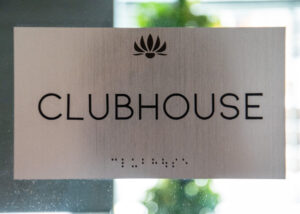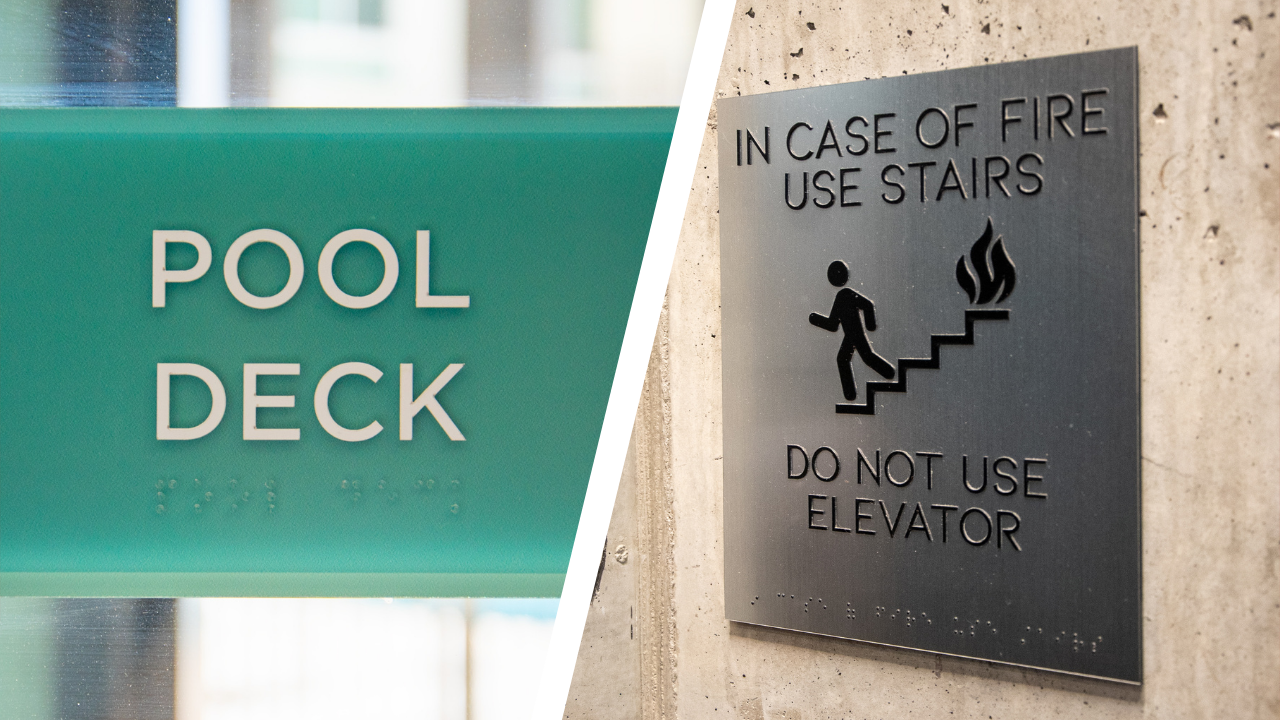For most signage jobs, your customers usually know what they want and come to you for expert help in bringing their vision to life. But when it comes to complying with the Americans with Disabilities Act (ADA), I’ve found that few of our clients know what they actually need or what laws govern this type of signage. The stakes are higher, too. Your client doesn’t just risk miscommunication and lost business if they fail to comply with the law but may also face fines and penalties if the breach is serious enough.
More than with any other project, you need to know and understand what your customers’ needs are and how to work within the law’s constraints of color, design, and size.
Signed into federal law in 1990, the ADA is a complex set of regulations forbidding discrimination on the basis of disability. It includes a section on accessible design, which requires “Newly designed and constructed or altered state and local government facilities, public accommodations, and commercial facilities to be readily accessible to and usable by individuals with disabilities.” The regulations are extensive and can be complicated; you can get in over your head if you don’t take the time to learn and apply the right standards in your designs and installations. I’ve seen projects that were not designed correctly and signs that had to be removed and replaced because they were installed incorrectly — costly mistakes!
Knowledge creates opportunity
 Once you learn the portions of the law that affect your shop, you’ll find almost limitless possibilities for new and continuing business. New buildings are always being constructed; older ones are remodeled and updated. They need signage, as all buildings do, but your ADA expertise can give you an edge over less-knowledgeable competition.
Once you learn the portions of the law that affect your shop, you’ll find almost limitless possibilities for new and continuing business. New buildings are always being constructed; older ones are remodeled and updated. They need signage, as all buildings do, but your ADA expertise can give you an edge over less-knowledgeable competition.
All permanent inside doors require an ADA-compliant sign. There are door signs, directional signs, safety signs, and more. Exteriors must display parking, informational, and directional signs. My personal list of interior signage includes 42 different sign types. The list is long, and the opportunity is great.
Your prospects are diverse and growing. Schools, hospitals, commercial properties, and multifamily residential developments all require ADA-compliant signage. Hotels and government agencies have long been significant markets, and now the apartment segment is also expanding. Many properties are rebranding and choosing to install new signage to create a more upscale appearance. This is where your services as a signmaker can make a difference.
Here’s how you can turn opportunities into new business:
- Research the law: Start with learning the portion of the law that applies to accessible sign design: gpro.link/adasigns2010. The latest ADA laws went into effect March 15, 2011.
You will need to know what signs require raised text and Braille versus informational signs that do not. Study the fonts, type size, and color regulations that ensure signage is readable for vision-impaired users and is posted at a height visible to those in wheelchairs or with other mobility issues. - Educate your team: Make sure the shop staff understands the law well enough to explain it to customers. Consider having a formal training program dedicated solely to ADA. There are plenty of resources available if you are willing to do the research.
- Start small: If you are not making ADA signage and want to start, take it one piece at a time. You can purchase equipment without too much expense, and it will get you in the game until you have built the volume to the point where you need bigger or better equipment.
- Look around you: Start looking for ADA-compliant signs and take pictures of those you see around you. Despite the strict specifications in the law, you’ll find room for creativity in your designs. This also opens the door for more profitability.
- Take time with your client: Meet with the client as you plan their job. Show examples of compliant products you can create and explain how they can fit the client’s needs. The conversation gives you a chance to share why ADA signs are necessary and how you can design signs specifically for them.
Sharing the vision
As an industry, we need to do a better job of helping our clients understand why each type of ADA sign is needed and how they are important for a large number of the population. We need to own the creative side of this segment of business and help in this world of visual communication. That begins with educating ourselves.




